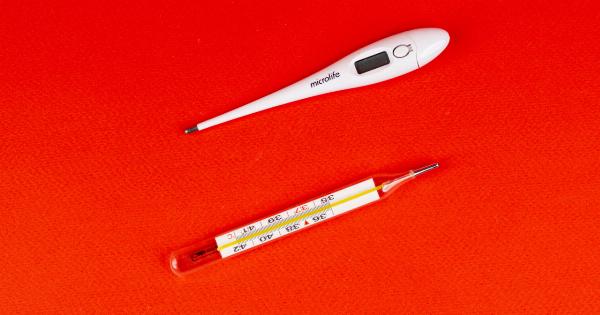Melamine, a chemical compound commonly found in different products, has become a serious health threat worldwide due to its toxic properties.
Melamine is used in the production of a wide range of items ranging from kitchenware to building materials and even adhesives. Despite its versatility, recent studies have shown that prolonged exposure or consumption of melamine can cause serious, life-threatening conditions.
In this article, we will delve into the dangers of melamine and highlight the potential risks of everyday exposure to the toxic chemical.
What is Melamine?
Melamine, also known as triaminotriazine, is a white, crystalline, and nitrogen-rich compound that is widely used in modern industrial processes.
This chemical compound is created by combining urea and formaldehyde under high temperatures and is then transformed into a powder with a high melting point.
While melamine is originally used as a flame retardant in plastics, it is also utilized to strengthen materials like plywood, paint, and even fertilizer.
Furthermore, melamine has found a spot in the food industry, particularly in the production of plastic flatware and dinnerware as well as in the preservation of food. The chemical enhances the durability of such products, making them resistant to scratches, heat, and breakage.
Additionally, melamine is utilized in animal feed and dairy farming as it has been found to increase the protein levels in milk and meat.
Dairy farmers, in particular, have found it useful to mix melamine with milk to increase its protein content artificially, thus improving its market value.
The Dangers of Melamine Exposure
Although melamine has many uses, it poses several health hazards to both humans and animals.
The World Health Organization recently identified it as a potentially hazardous chemical compound, and as such, has placed stringent restrictions on its production and consumption. Melamine exposure has been linked to various health conditions, such as:.
1. Kidney Stones
One of the most common adverse effects of melamine is kidney stones. It occurs when melamine crystals accumulate in the body, causing blockages.
Accumulation of this toxic chemical in the kidney leads to the formation of kidney stones, which can be incredibly painful and cause bleeding as well as other complications.
2. Kidney Failure
Another acute effect of melamine exposure is kidney failure. Consuming food contaminated with melamine, such as dairy products manufactured under unsafe conditions or with contaminated milk, can cause kidney failure in both humans and animals.
3. Developmental Issues
Studies have also indicated that melamine exposure poses a great threat to the developing fetus, causing birth defects as well as intellectual disabilities.
Ingesting melamine during pregnancy can cross the placental barrier and damage the fetus’s neural pathways, causing long-term complications.
4. Respiratory Issues
Melamine dust inhalation can also cause respiratory problems. The inhalation of melamine-contaminated air during manufacturing processes can cause breathing difficulties, respiratory tract irritation, and, in the worst-case scenario, lung damage.
Exposure to Melamine
Melamine exposure can occur in various ways. The most common methods of exposure include:.
1. Ingestion of Contaminated Food
Consumption of food products contaminated with melamine is a significant cause of human exposure. This often occurs when dairy products, animal feed, or infant formulas are contaminated with melamine.
Due to the unregulated nature of dairy farming in some countries, it is possible for farmers to mix melamine into animal feed and milk to increase their protein levels artificially, thereby increasing their market value.
2. Through Inhalation
Inhalation of melamine dust during the production of melamine-based products is yet another avenue of exposure. Factory workers who are involved in the production of such products are at the highest risk of inhaling the toxic chemical.
3. Through Skin Contact
Finally, skin contact with the chemical can also cause exposure. Workers who manufacture products made from melamine, such as kitchenware, can come into contact with the toxic substance through skin exposure.
It is essential to note that skin contact with melamine poses a less significant risk of exposure compared to ingestion or inhalation.
Preventing Melamine Exposure
There are several measures that can be put in place to prevent exposure to melamine, including:.
1. Sourcing Safe Products
Consumers should ensure that they buy only tested and certified products that do not contain melamine. This is particularly crucial for products that come in contact with food such as flatware and dinnerware.
2. Enhancing Food Safety
To prevent melamine contamination of food products, it is crucial to enhance food safety and hygiene.
Dairy farmers, for instance, should implement safe farming practices and avoid adding melamine to animal feed, while food manufacturers should adhere to strict quality standards.
3. Educating the Public
Finally, public education and awareness are essential in preventing melamine exposure. Individuals should be made aware of the potential risk of melamine exposure, its sources, and how to mitigate exposure.
Conclusion
While melamine has been found to be a versatile compound with various uses, its potential health hazards cannot be ignored. Prolonged exposure or consumption of melamine can cause kidney stones, kidney failure, and even developmental issues in fetuses.
It is, therefore, crucial for individuals and manufacturers to take steps to prevent exposure to melamine and prioritize their safety.






























